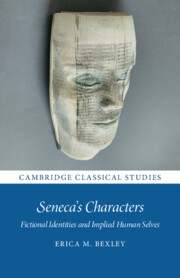Book contents
Bibliography
Published online by Cambridge University Press: 23 June 2022
Summary
Information
- Type
- Chapter
- Information
- Seneca's CharactersFictional Identities and Implied Human Selves, pp. 350 - 373Publisher: Cambridge University PressPrint publication year: 2022
- Creative Commons
- This content is Open Access and distributed under the terms of the Creative Commons Attribution licence CC-BY-NC-ND 4.0 https://creativecommons.org/cclicenses/
